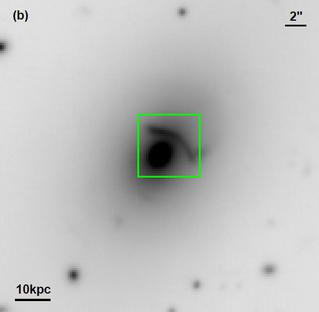A black hole is a mysterious object formed when a massive star collapses and creates a gravitational pull so strong that nothing, not even light, can escape its boundary called the event horizon. The more massive the black hole, the stronger its gravitational force.
Despite their terrifying reputation, black holes play a crucial role in the universe as cosmic recycling centers that devour matter and release energy back into the universe. Scientists continue to study them to unravel their mysteries and learn more about the fundamental nature of space, time, and gravity.
The size of Abell 1201
A team of astronomers recently made the unusual discovery of an ultramassive black hole, thought to be one of the largest ones to have been seen thus far.
The enormous black hole named Abell 1201 BCG, which is hundreds of millions of light-years away from Earth and is estimated to weigh 32.7 billion suns, is at the centre of a galaxy.

The event horizon’s diameter is over 1,290 astronomical units, dwarfing even the distance from Pluto to the Sun, which I just 40. Using a novel method called gravitational lensing, a team headed by Durham University in the UK discovered it. Read: Beyond the Visible: Gravitational Lensing Reveals Monster Black Hole
Gravitational Lensing:

The phenomenon of gravitational lensing, in which light from a faraway object is bent and magnified by a nearby galaxy, has given scientists a rare chance to calculate the mass of supermassive black holes outside of our local universe. Since supermassive black holes must be in an active condition in order to be measured, the sample size is typically small and selection biases may exist. Gravitational lensing has allowed researchers to get around these restrictions and learn important new things about the masses of these mysterious cosmic titans in far-off galaxies.
According to James Nightingale, the lead author of the study and an astrophysicist at Durham University, the newly discovered black hole is a remarkable find. With a mass of more than 30 billion times that of our sun, it is one of the largest black holes ever detected and is close to the theoretical upper limit of how massive black holes can become. He expressed his excitement about this discovery in a statement, calling it an extraordinary find.
Conclusion:
The discovery of Abell 1021 BCG’s massive black hole, pushing the boundaries of ultramassive black holes with its staggering 32.7 billion solar mass, is a testament to the awe-inspiring mysteries of the cosmos. The mind-boggling size of this black hole, with an event horizon spanning over 1,290 astronomical units, challenges our understanding of the universe and raises intriguing questions about the formation and evolution of galaxies. As astronomers continue to push the limits of our knowledge and technology, we can only imagine what other cosmic wonders await us in the vastness of space, waiting to be unveiled and unravelled by the human thirst for discovery.
